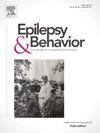定性分析功能性/分离性癫痫发作的书面记录
IF 2.3
3区 医学
Q2 BEHAVIORAL SCIENCES
引用次数: 0
摘要
目的了解功能性/解离性癫痫(FDS)的主观经验对诊断和制定治疗方案具有重要意义。本研究旨在通过分析具有FDS个人经验的作者提供的书面叙述,提高对这些癫痫发作的症状学理解。方法FDS的描述摘自《In Our Words: Personal Accounts of Living with non - epilepds》一书的文章。立即发作前、发作中或发作后症状被识别并进行总结性内容分析。主位和次位分别由归纳和演绎得出。结果在93位FDS患者中,有75位提到了癫痫症状。在大多数叙述中,FDS涉及复杂的、多维的症状。出现了六个高级症状域:“意识”、“运动”、“感觉”、“唤醒”、“情绪”和“认知”。在“意识”的上级主题(63/75篇文章)中,“意识”是最常被提及的主题,其次是“自我控制/反应”和“断开”的损害。运动症状的第二个最突出的高级主题(75位作者中有58位)包括“积极”(过度活动)、“消极”(运动活动减少)和“混合”症状。类似的感觉描述包括“超敏”、“低敏”和“混合”症状。“痛苦”是另一个突出的感官副主题(13/75叙事)。“兴奋”主题(20/75)捕获的“亢奋”多于“低兴奋”。在上级主题“情绪”(22/75作者)中,“焦虑”症状尤为突出。上级的“认知”主题(14/45写作)主要捕捉“模糊思维”和“记忆缺陷”。结论从个体的个人经历来看,FDS是一种复杂的异质现象,跨越了身体、情感、自主和认知领域。FDS的症状特征应该有助于早期诊断。本文章由计算机程序翻译,如有差异,请以英文原文为准。
Qualitative analysis of written accounts of functional/dissociative seizures
Objective
Subjective experiences of functional/dissociative seizures (FDS) are important for diagnosis and treatment formulation. This study aims to improve the symptomatological understanding of these seizures by analysing written narratives provided by authors with personal FDS experience.
Methods
Descriptions of FDS were extracted from contributions to the book “In Our Words: Personal Accounts of Living with Non-Epileptic Seizures”. Immediately preictal, ictal or postictal seizure symptoms were identified and subjected to summative content analysis. Themes and subthemes were derived inductively and deductively.
Results
Of 93 authors with FDS who submitted contributions to the book, 75 mentioned seizure symptoms. In most narratives, FDS involved a complex, multidimensional symptomatology. Six superordinate symptom domains emerged: ‘consciousness’, ‘movements’, ‘sensations’, ‘arousal’, ‘emotions’, and ‘cognition’. Within the superordinate theme of ‘consciousness’ (63/75 writings), ‘awareness’ was most frequently topicalised, followed by impairment of ‘self-control/ responsiveness’ and ‘disconnection’. The second most prominent superordinate theme of motor symptoms (58/75 authors) included ‘positive’ (excessive activity), ‘negative’ (reduced motor activity) and ‘mixed’ symptoms. Accounts of sensations similarly included ‘hypersensitivity’, ‘hyposensitivity’ and ‘mixed’ symptoms. ‘Pain’ was another prominent sensory subtheme (13/75 narratives). The ‘arousal’ theme (20/75 accounts) captured ‘hyper-‘ more often than ‘hypoarousal’. In the superordinate theme ‘emotions’ (22/75 authors) ‘anxiety’ symptoms were particularly prominent. The superordinate ‘cognition’ theme (14/45 writings) mainly captured ‘foggy thinking’ and ‘memory deficits’.
Conclusions
In the words of individuals with personal experience, FDS emerge as complex and heterogeneous phenomena spanning physical, emotional, autonomic and cognitive domains. The characterization of FDS symptomatology should help with earlier diagnoses.
求助全文
通过发布文献求助,成功后即可免费获取论文全文。
去求助
来源期刊

Epilepsy & Behavior
医学-行为科学
CiteScore
5.40
自引率
15.40%
发文量
385
审稿时长
43 days
期刊介绍:
Epilepsy & Behavior is the fastest-growing international journal uniquely devoted to the rapid dissemination of the most current information available on the behavioral aspects of seizures and epilepsy.
Epilepsy & Behavior presents original peer-reviewed articles based on laboratory and clinical research. Topics are drawn from a variety of fields, including clinical neurology, neurosurgery, neuropsychiatry, neuropsychology, neurophysiology, neuropharmacology, and neuroimaging.
From September 2012 Epilepsy & Behavior stopped accepting Case Reports for publication in the journal. From this date authors who submit to Epilepsy & Behavior will be offered a transfer or asked to resubmit their Case Reports to its new sister journal, Epilepsy & Behavior Case Reports.
 求助内容:
求助内容: 应助结果提醒方式:
应助结果提醒方式:


